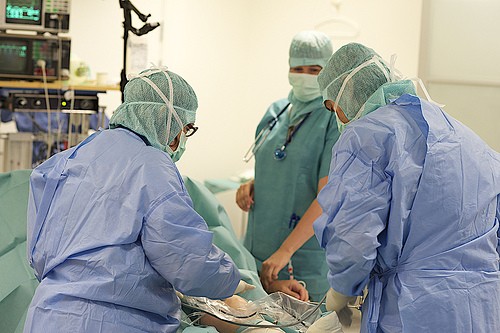
Neurosurgeons can now conduct brain tumor surgeries through nose. The technique was used for mummification by the ancient Egyptians that involved removing deceased brain through nose.
Reaching for tumors in some regions such as the pituitary gland located at the skull base are difficult, as these areas are located close to vital nerves, blood vessels that are associated with the brain, spinal cord and head. Usually, removing of tumors from these areas required large incision, called craniotomy and leaves behind a huge scar that requires longer recovery period.
But recently, surgeons have introduced less invasive brain surgery method known as Transnasal endoscopic skull-base surgery that involves access to the brain through the patient's nostrils and thus removing the tumor.
This major move in skull-base surgery came with the improvement in endoscopic techniques that employs small, telescoping camera, explained Dr Pablo Recinos, a neurosurgeon at Cleveland Clinic in Ohio to Live Science.
The use of endoscopes in pituitary-tumor surgeries started around 20 years back, explained Recinos. From the last decade onwards, neurosurgeons started performing endoscopic skull-base operations. But, it was only recently that scientists created skull-base tissue reconstruction techniques.
Nasal brain surgery requires two surgeons to operate on a patient - a neurosurgeon who performs the surgery and the other is usually an ear, nose and throat (ENT) specialist, who controls the endoscope.
"It's literally like a marriage or a dance partnership. You need to learn to dance without stepping on each other's toes."Recinos said.
"This technique was first introduced less than 10 years ago, and only a few centers are doing it to a high level. What's unique to what we're doing is, we don't tag in and out — we're there the entire time and doing it as a combined approach. It's a two-surgeon, four-hand technique." said Dr Raj Sindwani, an ENT specialist at Cleveland Clinic.
As compared to other traditional craniotomies, brain surgery through nose allows complete removal of the tumor.
This new method hopes to reduce the duration of time the patients spend in hospital post surgery compared to patients recovering from traditional open methods. The research is still in progress, said Recinos.
Like all other surgeries, the transnasal skull-base surgery involves risks that include infection, stroke, bleeding, optical nerve damage and other nerves. Whereas, involvement of endoscope and navigation tools assists in minimizing these types of risks with better visualization, Recinos added.








